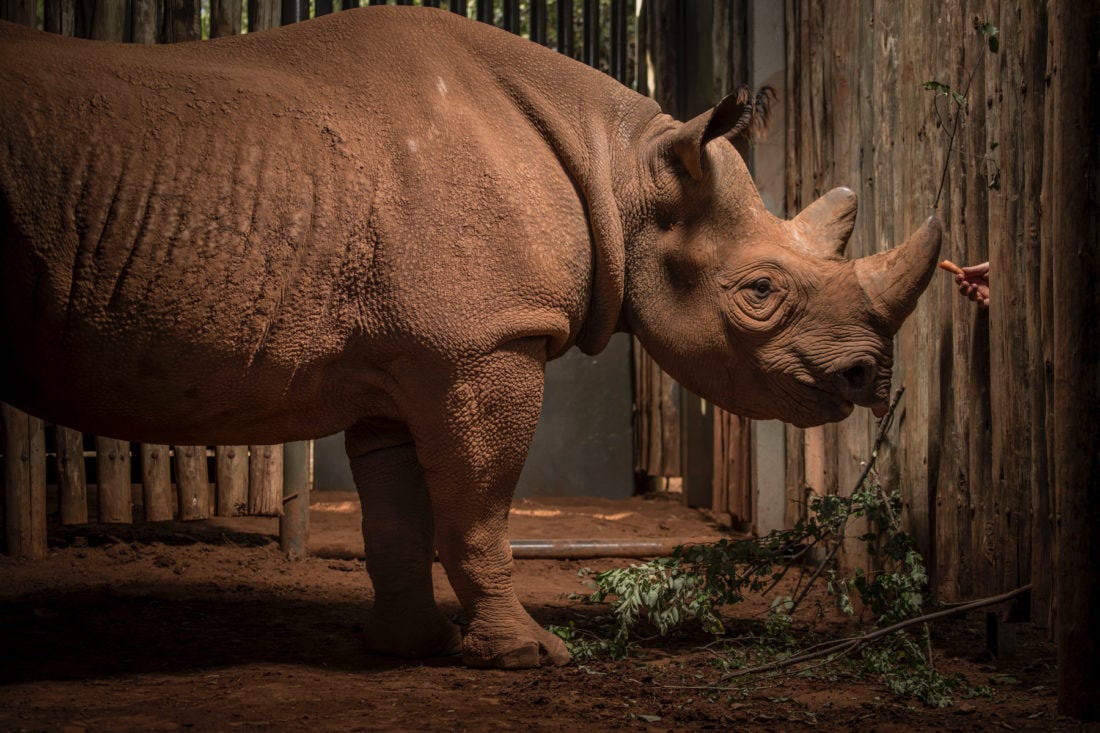
Colin here. The rhino population in Africa has been decimated, particularly in East Africa. According to the Convention on International Trade in Endangered Species, since 1970 the number of rhinos in Tanzania decreased from an estimated 10,000 to around 100.
The reason? Rhino horn is popular in Chinese medicine and is also a symbol of wealth and prestige in Asia. In the west, it is often mistakenly seen as an aphrodisiac. The poaching of rhinos is increasingly sophisticated, and, given the money at stake, poachers are constantly finding new ways to elude scouts. Their methods are rather macabre: They often tranquilize the animal, cut off the horn, and leave it to bleed out and die in the hostile environs of the bush.
In an act of foresight during the 1970s and 1980s, black rhino from various parts of East Africa were translocated to safe havens in international zoos and breeding sanctuaries. This was done in an effort to safeguard the species. Now, as some preserves have managed to get poaching under control, there is a strong interest in bringing the animals back to their native habitats. The goal is to re-establish populations in well-protected areas where they formerly thrived like the Serengeti reserve I wrote about for WITI 8/6 - The Conservation Edition.
Why is this interesting?
Some friends were recently involved in something that seems otherworldly: A Rhino airlift. Nine eastern black rhino were flown from South Africa to Kilimanjaro on a chartered 747 cargo plane, joined by three wildlife veterinarians and a rhino behavior specialist.
From Kilimanjaro, the rhino flew in a C130 transport aircraft to the Grumeti reserve, then, for the final leg of the trip, they were taken by truck to their temporary enclosures. According to the team they will reside in the enclosures “until the team of wildlife veterinarians deem them ‘fit for release’ into the wider Serengeti ecosystem.” The rhinos were donated by the Grumeti Fund, a non-profit organization carrying out wildlife conservation in the Serengeti.
According to Beverly Burden, who runs comms for the project:
This is the largest single movement of rhino into Tanzania and will increase the national population of these critically endangered species by approximately 10%. The animals, who were carefully selected by age and genetic composition, are directly related to the rhino removed from East Africa in the 1970’s and will be of extreme value to the genetic diversity of the current population. The South African government’s role in the protection of rhino both within the country and across the continent has been vital.
After the logistical challenge of getting rhinos to behave on an airplane, is the idea of rewilding. The animals still have to re-acclimate to their new surroundings in the Serengeti, but it is a step in the right direction to rebuild the population in Tanzania from the meager numbers that exist today. You can donate to the Grumeti fund’s efforts here. (CJN)
Rhino of the Day:
An eight-year-old eastern black rhino male gifted by San Diego Zoo Global has been successfully translocated to the western Serengeti. He appears to be tempted by a carrot. (CJN)

Quick Links:
Thanks for reading,
Noah (NRB) & Colin (CJN)
PS - Noah here. I’ve started a new company and we are looking for our first/lead product designer to join the team in Brooklyn. If you are a product designer or know anyone who is great, please share. Dinner’s on me at a restaurant of your choice if you help us find someone.
Why is this interesting? is a daily email from Noah Brier & Colin Nagy (and friends!) about interesting things. If you’ve enjoyed this edition, please consider forwarding it to a friend. If you’re reading it for the first time, consider subscribing (it’s free!).








